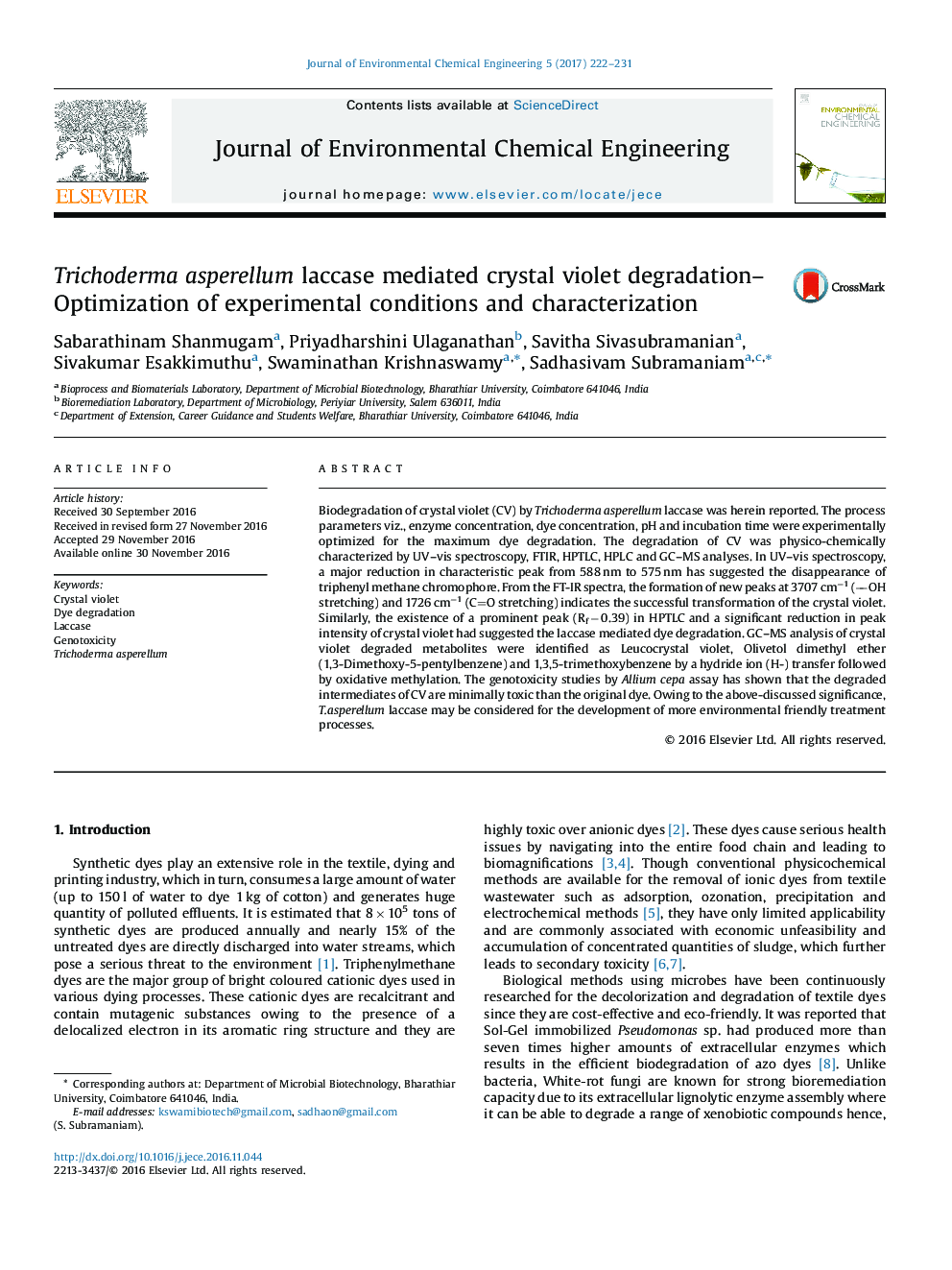| Article ID | Journal | Published Year | Pages | File Type |
|---|---|---|---|---|
| 6477320 | Journal of Environmental Chemical Engineering | 2017 | 10 Pages |
â¢A new laccase from Trichoderma asperellum mediated dye degradation was reported.â¢114 ppm of dye degradation was achieved without any redox mediator.â¢The intermediates obtained were Leucocrystal violet, Di-and tri-methoxy-benzene.â¢The geno and cytotoxicity assay has shown negligible toxicity.
Biodegradation of crystal violet (CV) by Trichoderma asperellum laccase was herein reported. The process parameters viz., enzyme concentration, dye concentration, pH and incubation time were experimentally optimized for the maximum dye degradation. The degradation of CV was physico-chemically characterized by UV-vis spectroscopy, FTIR, HPTLC, HPLC and GC-MS analyses. In UV-vis spectroscopy, a major reduction in characteristic peak from 588 nm to 575 nm has suggested the disappearance of triphenyl methane chromophore. From the FT-IR spectra, the formation of new peaks at 3707 cmâ1 (OH stretching) and 1726 cmâ1 (CO stretching) indicates the successful transformation of the crystal violet. Similarly, the existence of a prominent peak (Rf â 0.39) in HPTLC and a significant reduction in peak intensity of crystal violet had suggested the laccase mediated dye degradation. GC-MS analysis of crystal violet degraded metabolites were identified as Leucocrystal violet, Olivetol dimethyl ether (1,3-Dimethoxy-5-pentylbenzene) and 1,3,5-trimethoxybenzene by a hydride ion (H-) transfer followed by oxidative methylation. The genotoxicity studies by Allium cepa assay has shown that the degraded intermediates of CV are minimally toxic than the original dye. Owing to the above-discussed significance, T.asperellum laccase may be considered for the development of more environmental friendly treatment processes.
Graphical abstractDownload high-res image (93KB)Download full-size image
